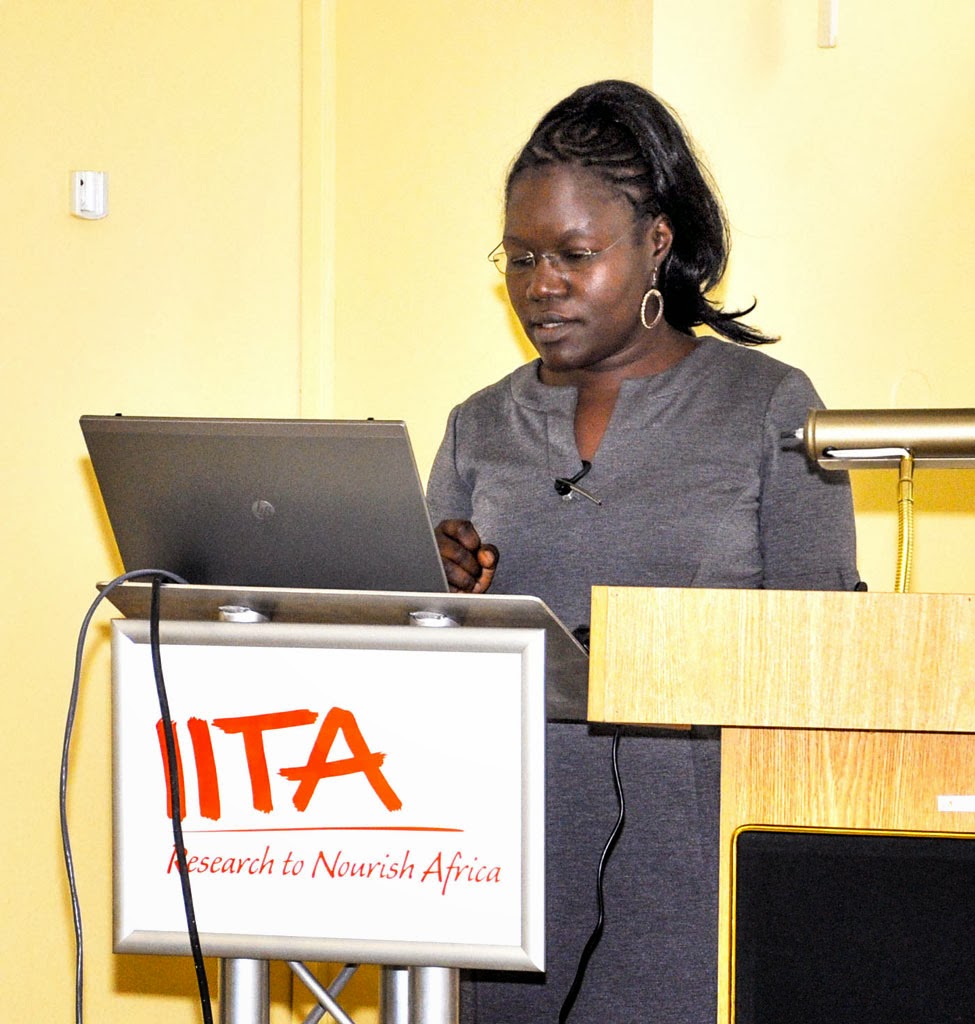 |
L-R: Dr Maroya, Annang, Asiedu, Aighewi and members of the press at
the unveiling of the new seed yam propagation technique in IITA Ibadan |
Researchers at the
International Institute of Tropical Agriculture (IITA) have successfully grown
seed yams in the air using aeroponics technology, raising hopes and more
options for the propagation of virus- and disease-free planting materials.
In preliminary trials,
Dr Norbert Maroya, Project Manager for the Bill and Melinda Gates
Foundation-funded “Yam Improvement for Incomes and Food Security in West Africa
(YIIFSWA) project at IITA, together with a team of scientists successfully
propagated yam by directly planting vine cuttings in Aeroponics System (AS)
boxes to produce mini-tubers in the air.
Aeroponics System is the
process of
growing plants in an air or mist environment without the use of soil or an
aggregate medium. The technology is widely used by commercial potato seed
producers in eastern Africa (Kenya, Uganda, Tanzania etc.), and southern Africa
(Mozambique, Malawi etc.) but successfully growing yam on aeroponics is a
novelty for rapidly multiplying the much needed clean seed yam tubers in large
quantities.
“With this approach we
are optimistic that farmers will begin to have clean seed yams for better
harvest,” Dr Maroya said on Friday.
Preliminary results
showed that vine rooting in Aeroponics System had at least 95% success rate compared to
vine rooting in carbonized rice husk with a maximum rate of 70%. Rooting time
was much shorter in aeroponics.
Aeroponics is coming at
an opportune time for African farmers. Traditionally, seed yam production is
expensive and inefficient. Farmers save about 25 to 30% of their harvest for
planting the same area in the following season, meaning less money in their
pockets.
Moreover, these saved
seeds are often infested with pathogens that significantly reduce farmers’
yield year after year.
However with an
established Aeroponics System for seed yam propagation at the premises of an
interested private investor, seed company or humanitarian nongovernmental
organization; yam producers can have access to clean seed yams.
The soilless yam
propagation system will increase the productivity of seed and ware yam and
effectively reduce diseases and pests incidence and severity (no soil borne or
vector-transmitted pests and diseases during the vegetative phase).
Dr Robert Asiedu, IITA
Director for Western Africa described the results as “impressive.”
“Yam is an important
crop in Africa and addressing the seeds’ constraint will go a long way in
improving the livelihoods of farmers who depend on the crop for their livelihood,”
he added.
In conducting the aeroponics trial, a
special structure was built in an existing screen house with Dixon shelf frames
using perforated styrofoam box, as support for plant vines, while the
developing roots of the plants in the air were enclosed in conditions of total
darkness to simulate the situation of soil to the roots. For the plant and
tuber to develop, an automated power house system was established for atomizing
periodically nutrient enriched water solution in the form of mist to feed the
plants.

.gif)
















